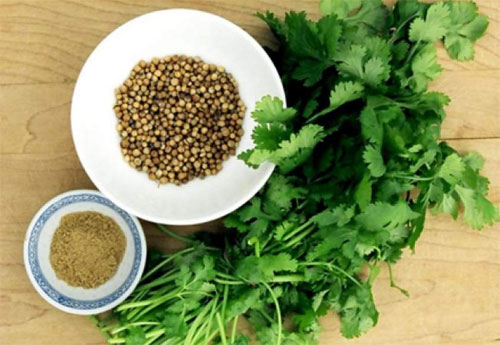Cilantro: How This Versatile Herb Could Be a Lifesaver in an Emergency
If you aren’t already including Cilantro (Coriandrum sativum) in your diet (and your garden), it is time to start thinking about it for a number of reasons we’ll go into now.

Cilantro is a member of the mint family, and it has a taste that you either love or dislike the first time. It is a principal herb to flavor Mexican and Hispanic dishes. Indeed, fajitas are replete with it, and incomplete without it.
From an herbal perspective, it has been used with many ailments, such as nausea, diarrhea, problems with excessive flatulence, and toothache. It is an annual, originally found in Southern Europe (Spain, Italy, and Greece), as well as in North Africa (Libya, Tunisia, and Morocco). The essential oil is effective against Staphylococcus aureus, Escherichia coli, and Enterococcus faecalis, to name a few that are associated with fecal-oral transmission and the kinds of conditions in a grid-down emergency.
Cilantro (3.5 ounces, or 100 g) has a tremendous amount of nutritional value: calcium, zinc, magnesium, iron, potassium, and vitamins are found in abundance. Indeed, this amount of cilantro holds 27 mg of Vitamin C, or 1/3 of the RDA.
Cilantro also removes toxic metals from the human body. Aluminum, arsenic, cadmium, and mercury are among such metals and cilantro can help detox them from the liver. The herb also protects against the uptake of lead in the human body. Now, with all that metallic garbage floating around in our ground and municipal water systems, we can use all of the help we can find! Even if you have a well, that is no guarantee that such metals will not leach into the well at a later date, after the well water has tested negative for them.
Cilantro is best consumed when it is fresh and uncooked, as the heat lowers its abilities and breaks it down. It can be tinctured, but if you do, tincture it using the fresh herb and not the dried, as the best phytochemical (plant-based substances that fight the alcohol – using grain alcohol is best) preserves it and keeps it from freezing at low temperatures, as well. For exact freezing temperatures, refer to our article on freezing points for ethyl alcohol.
Cilantro is inexpensive and easily obtained, as well as simple to grow. You can use it for many different things, and many of you will think it tastes fantastic on foods.
yogaesoteric
October 29, 2019
